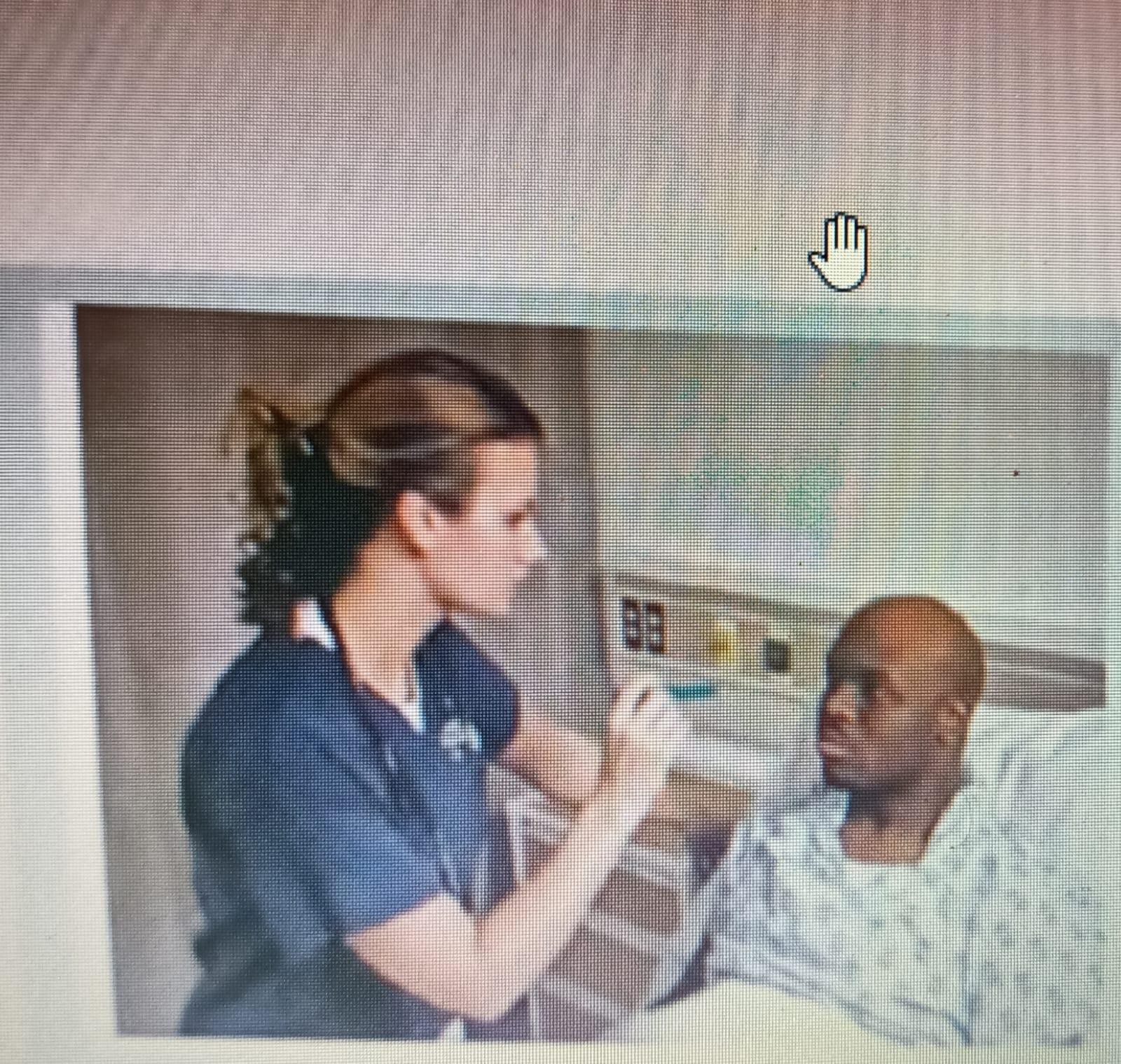Which client should receive the pictured examination first?

a client with nausea, vomiting, and abdominal pain
a client with chest tightness and heartburn
a client with facial drooping and left-sided weakness
a client with fatigue, fever, and productive cough
The Correct Answer is C
Choice A rationale: A client with nausea, vomiting, and abdominal pain may have gastroenteritis, food poisoning, or appendicitis, which are not directly related to the eyes.
Choice B rationale: A client with chest tightness and heartburn may have gastroesophageal reflux disease (GERD), angina, or myocardial infarction (MI), which are also not associated with the eyes.
Choice C rationale: A client with facial drooping and left-sided weakness may have a stroke, which is a medical emergency that requires immediate attention. An eye examination can help detect signs of stroke, such as pupil asymmetry, visual field defects, or eye movement abnormalities. A stroke can cause permanent brain damage or death if not treated promptly.
Choice D rationale: A client with fatigue, fever, and productive cough may have a respiratory infection, such as pneumonia or tuberculosis, which are unlikely to affect the eyes unless there is a systemic complication.
Nursing Test Bank
Naxlex Comprehensive Predictor Exams
Related Questions
Correct Answer is ["A","D","F"]
Explanation
Choice A rationale: Altered consciousness is a hallmark feature of delirium, where individuals may experience fluctuations in awareness.
Choice B rationale: Delirium typically has an acute onset rather than symptoms developing over months to years.
Choice C rationale: Delirium often has a fluctuating course, rather than a consistent progressive decline.
Choice D rationale: Delirium can result from various factors including fluid/electrolyte imbalances or infections.
Choice E rationale: While these conditions might contribute to cognitive impairments, they are not typically associated with delirium.
Choice F rationale: Delirium can affect judgment, but it's not a defining feature.
Choice G rationale: While memory impairments can be seen in delirium, they're often accompanied by altered consciousness and fluctuations in awareness.
Correct Answer is D
Explanation
Choice A rationale: This is not the accurate amount of fluid intake by the patient.
Choice B rationale: This is less than the total fluid intake by the patient.
Choice C rationale: This is less than the total fluid intake by the patient.
Choice D rationale: This is correct.( This is the sum of the intravenous fluid, the water, and the chicken broth, converted to milliliters: 650 + (6 x 30) + (8 x 30) = 1070.)
Whether you are a student looking to ace your exams or a practicing nurse seeking to enhance your expertise , our nursing education contents will empower you with the confidence and competence to make a difference in the lives of patients and become a respected leader in the healthcare field.
Visit Naxlex, invest in your future and unlock endless possibilities with our unparalleled nursing education contents today
Report Wrong Answer on the Current Question
Do you disagree with the answer? If yes, what is your expected answer? Explain.
Kindly be descriptive with the issue you are facing.
